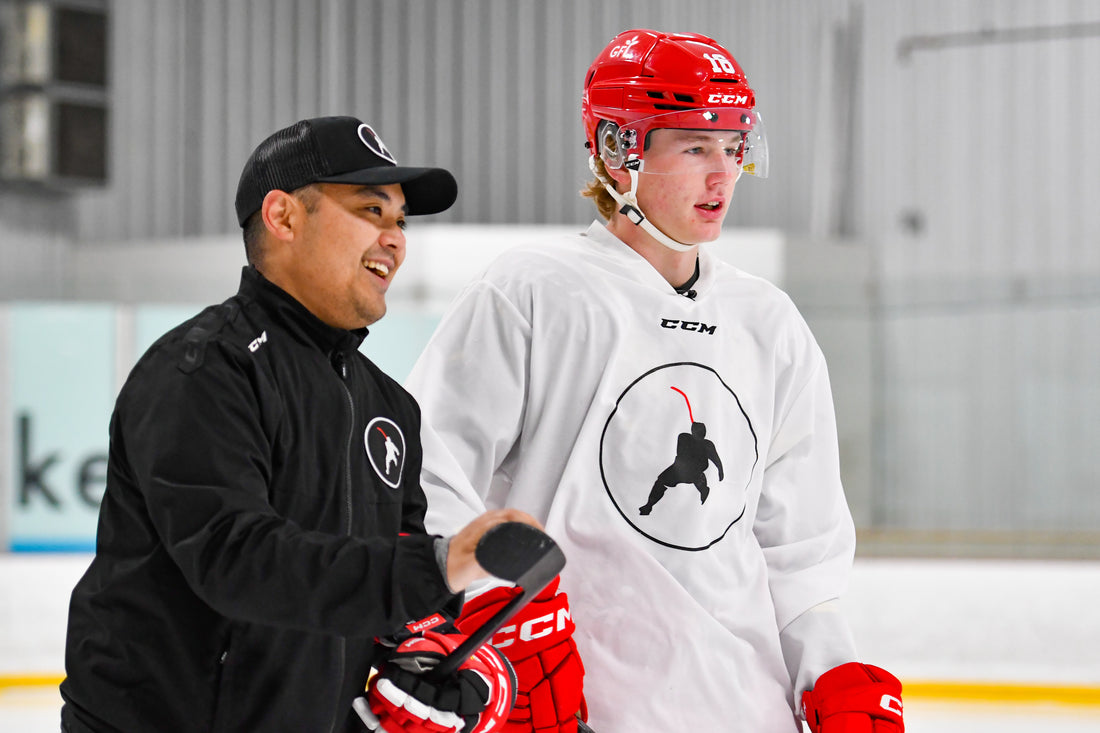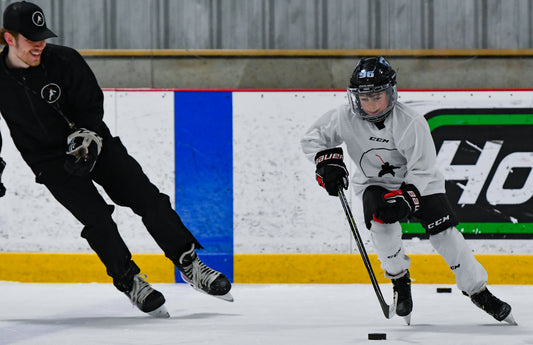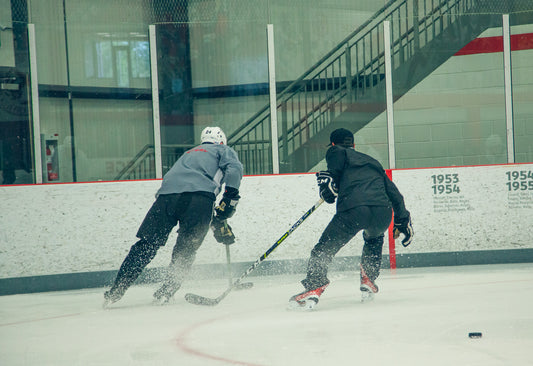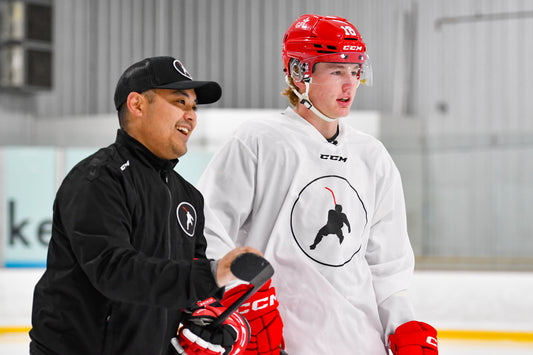Let’s just say you’d like to come out of retirement and get geared up to put in a big summer of work to be ready for the start of the season. There would be a ton of work in even just preparing to find the various specialized coaches, on-ice guys, strength and conditioning types, therapists, nutritionists, maybe even a mental coach. But how about peers? How do they fit in?
When we first started to build Perfect Skating, the number one main focus of parents was detailed instruction in a small group setting. Made sense. After all, we learn more with more good reps and a detailed and qualified coach can help accelerate the acquisition of skill. Agreed. But parents weren’t so excited to have their Major Bantam AAA player on the ice with an Atom AA player. Performance hinderance or negative propaganda? Dogma or optics?
In the history of training protocols, we can’t help but notice several underlying layers of thematic content. To put the plan together we must first ask an important question. Is the motor skill acquisition individual or binary? Let’s define these two important concepts.
A ballerina when acquiring motor control to balance on her left foot while engaging in a spin is an individual property of skill acquisition that relies only on that ballerina. Let’s call that internal environment. There are no external factors in the acquisition of that skill. It’s individual and can be trained in a setting with multiple athletes at various levels in the skillset. Now, you may be asking, yeah but you’d still be better off creating groups of equal level, even allowing lower level motor controlled athletes in this particular skillset compete with others that are more advanced, the notion that this will stretch the weaker athlete and bring their level of advancement closest to the cohort in the shortest amount of time. You could be right.
But let’s talk about this time thing. This is one of parents biggest pain points when it comes to youth hockey teams, development programs etc... We always want fast development. We assume pushing our athlete outside of their boundary will always produce a more efficient performance spike. I mean we’re flying to Mars soon right? Well, it’s only taking Elon Musk four decades to get that to be close to working. What about Edison, Einstein, Plato or Mozart? Were they externally pushed by their peers? Did they experience fast development? No way. Can external environments help? Sure. But in an individualized motor skill acquisition scenario, those enhancements or regressions are mostly psychological. Regressions you ask?
We’ve spent a lot of time understanding a performance model across many doctrines and the same holds true for every training paradigm. Too much too soon, likely regression. Too easy, not challenged, likely plateau. Capable yet challenged, performance spike. Within this framework we must consider individual vs binary motor control models. Remember that internal vs external? Here is a training example. We are working a tight turn in its fundamental biomechanical form. Individual and internal. Group level can affect psychological adaptation that can enhance or de-stabilize the skill but cannot affect biomechanical change. Now we’ve progressed to doing a tight turn with a puck, some touches and bingo now with pressure… Did adding a puck and some touches change the model. No. The bingo moment came with pressure, which now affects a more advanced neurological response in regards to acquiring skill. It added more complexity and that complexity is being generated by external environments. Group level matters.

The coach. The equalizer? Yes, if a method is present. No, if it is not. Do you know how many of the word’s best players I’ve trained that couldn’t even explain what they were doing while doing a Two Foot Stop? I couldn’t believe it. They just do it. They are pros because they have an elite mindset of when to do it in game play that makes them special. What if we talked about a complex movement pattern like a Hips First Pivot to Bwd X-Overs to Bwd Linear to Right Foot Inside Edge Stop to an Open Hip Start? You think a seasoned pro could teach that? They could perform it in their sleep but not a chance they could teach it. Well, correction they could teach it the way they know how to do it, but is that method? Inevitably, no. So, yes a coach can be a group equalizer, why? Because within a method in a small group they can manipulate the training variability specific to each individual athlete. How important is the group now?
So, parents. A great coach with a proven method coupled with a group just a bit better than your athlete. Likely a home run with external environment skill development. But don’t forget that most biomechanical and fundamental skills are individually harnessed and with the right education, that negative dogma present in the hockey development industry can take a rest. True development or optics of development? Understanding and differentiating between the two will ultimately help your athlete spike to his or her most efficient best. Fast development? Dogma. Faster than anywhere else? With the practiced concepts above, yeah, you can SPIKE!




